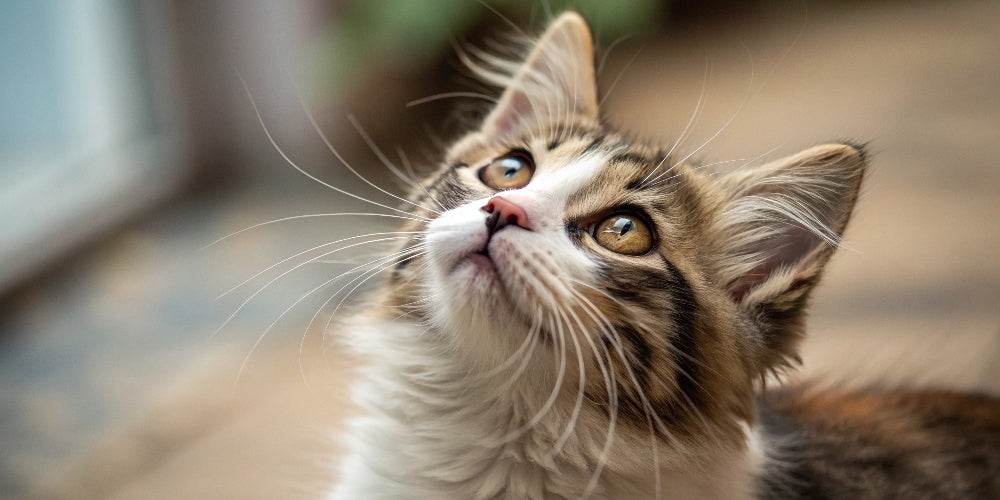
How long does a cat live?
Scientists have conducted countless studies over the years to discover why our pets' lifespans are shorter than ours. In fact, this research has been going on for a long time. Philosophers like Aristotle believed that the lifespan of animals was linked to the humidity inside them, which guaranteed a longer lifespan. Other theories suggest that it all depends on the size of the animal, although this theory is easily disproven since the average lifespan of a cat, for example, is longer than that of a dog. Apparently, the lifespan of pets is not only related to size or species; risk factors that decrease life expectancy of our furry friends—just as it is with humans. In the latter cases, we're talking about the diet and products provided, as well as daily physical activity and exposure to pollutants and carcinogens.
In this article, we'll focus exclusively on how long a cat lives. We'll also analyze the equivalence of cat years to human years and answer how to tell a cat's age. Read on for more information!
How long does a cat live: the life expectancy of a cat
A cat's life expectancy is longer than a dog's. The average lifespan of a cat can reach 16 years, while in dogs the average is 12 years—depending on size, as the larger they are, the shorter the life expectancy of dogs. However, the average lifespan of a cat, or how many years a cat lives, also depends on several factors, such as the living environment, the care received, or illnesses. As we indicated above, good nutrition is essential to prolong the life of a feline, as well as any pet. Currently, the average lifespan of a cat ranges from 10 to 15 years old.
Although there are always exceptions. According to the record books, the longest-lived cat was Creme Puff. The animal lived a long life of 38 years and 3 days. He was born on August 3, 1967, and died on August 6, 2005. Rubble was another of the longest-lived felines, specifically 31 years. He was found in the city of Exeter, England.
Cat years in human
Comparing the age of a dog with that of a human is very simple. Each year we grow is equivalent to seven years for our four-legged friend. However, with cats, it becomes a little more complicated, since evolution is not linear. Cat years vary over time. Thus, a cat's first two years are equivalent to a human's 24 years, while a feline's first eight years are equivalent to a human's 48 years. The following table can give you an approximate idea of how many cat years your pet has (the cat's age is shown in bold):
- 1 month: 6 months.
- 2 3 months: 2 to 5 years.
- 4 months: 6 to 8 years old.
- 6 months: 10 years.
- 7 months: 12 years old.
- 12 months: 15 to 16 years old.
- 18 months: 20 to 21 years old.
- 2 years: 24 years old.
- 3 years: 28 years old.
- 4 years: 32 years old.
- 5 years: 36 years old.
- 6 years: 40 years old.
- 7 years: 44 years old.
- 8 years: 48 years old.
- 9 years: 52 years old.
- 10 years: 56 years old.
- 11 years: 61 years old.
- 12 years: 61 years old.
- 13 years old: 68 years old.
- 14 years old: 72 years old.
- 15 years: 76 years old.
- 16 years old: 80 years old.
- 17 years old: 84 years old.
- 18 years old: 88 years old.
- 19 years old: 92 years old.
- 20 years: 96 years old.
It is important to make clear that these figures are indicative, and although they are based on several observations, Not all cats look the same nor the same behavior as they grow up.
How to know the age of a cat
After answering the question of how long a cat lives and comparing cat and human years, it's interesting to answer the question of how to tell a cat's age. You should be clear that There is no precise technique to determine itNow, based on their behavior, as well as some physical aspects that vary over time, we can get an idea.
A cat enters a senior stage when the age of 10 is reached. This is when the first changes in their fur can be seen. As cats age, they also become calmer and spend more time sleeping. They also develop a series of specific needs, such as a change in diet to softer, easier-to-chew foods—also adapted to the feline's energy. Another way to find out your pet's age—in case you don't know because it was a gift, rescued, adopted, or for any other reason—is to look at your teeth.
Young cats typically have 26 primary teeth—like human baby teeth. These are divided into 14 in the upper jaw and 12 in the lower jaw. You should also know that teeth don't begin to erupt until two weeks after birth, and sometimes as late as four. In the first month and a half of a cat's life, the premolars in the lower jaw will emerge, and by two months, all 26 teeth will have fully emerged. Your pet won't have adult teeth until six months old. However, from this point on, it's more difficult to calculate age. What you should do is pay attention to the condition of the jaw. Keep the following in mind:
- 1 year old: The teeth are white, healthy and clean.
- 2 years old: The teeth look a little more opaque and yellowish, with a little tartar.
- Between 3 and 5 years of age: The tartar will have spread and the teeth will be more worn.
- Between 5 and 10 years old: The cat will be an adult and its teeth will have greater deterioration, in addition, its gums will change color.
- From 10 years old: The teeth look very worn and have a lot of tartar buildup. Your pet may have lost some teeth.


